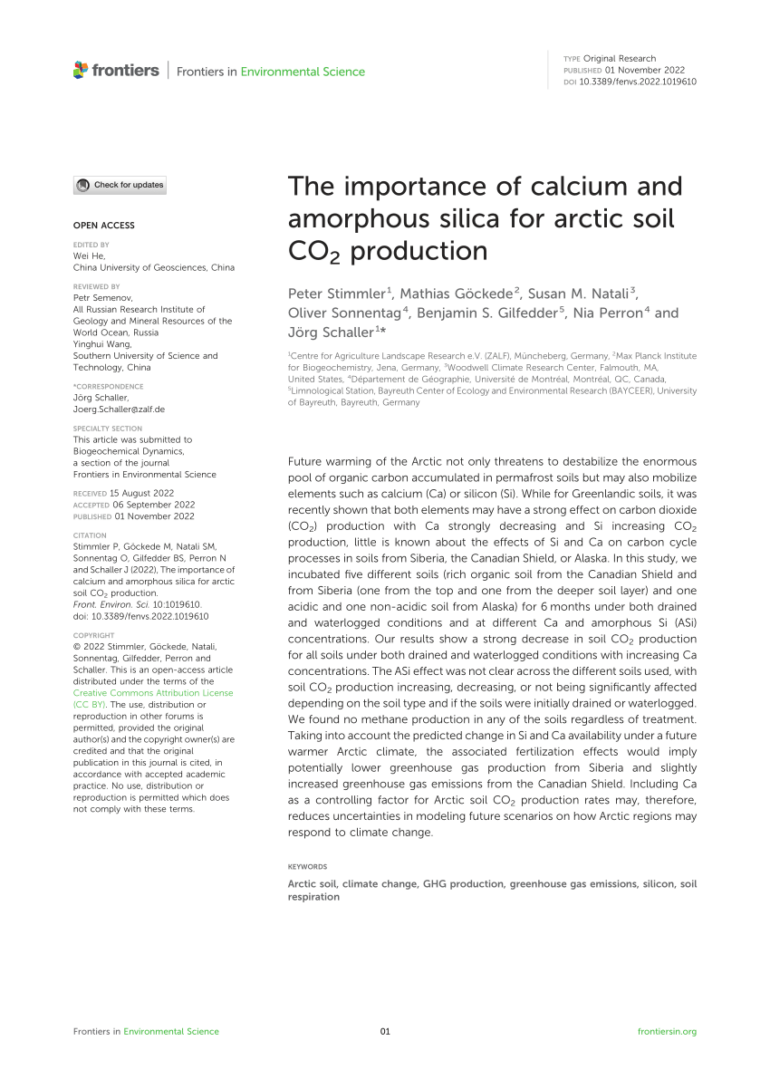by Leibniz-Zentrum für Agrarlandschaftsforschung (ZALF) e.V.
In a new study, researchers found that increasing the calcium content in soil significantly reduces CO2 emissions: 50% in calcium-poor soils and 57% in calcium-rich soils. The reason for this is that calcium promotes the formation of the mineral aragonite, which binds CO2 and thus prevents the release of this greenhouse gas into the atmosphere.
The results could contribute to new approaches in dealing with the consequences of global warming, especially in the sensitive Arctic regions, which are particularly at risk from climate change. The research is published in the journal Environmental Science & Technology.
Calcium reduces CO₂ release—through the formation of aragonite
As temperatures rise, the permafrost soils in the Arctic are increasingly thawing. This not only releases large amounts of organic carbon, but also increases the calcium concentration in the soil. The study shows that this calcium release leads to the formation of aragonite—a mineral consisting of calcium and CO2. This retains CO2 in the soil, which would otherwise escape into the atmosphere.
“The ability of calcium to bind CO2 through the formation of aragonite is a surprising discovery and shows how important nutrients such as calcium can be for climate change,” says Prof. Joerg Schaller from ZALF, the leader of the study. “The results open up new perspectives for the integration of these processes into global and local carbon models.”
Long-term effects on climate change
The Arctic is particularly vulnerable to the consequences of climate change, as temperatures there are rising twice as fast as the global average. The release of CO2 from thawing permafrost soils could further accelerate climate change.
However, the new study shows that calcium has the potential to at least partially slow down this process. The researchers are now calling for further field experiments to validate these results and integrate the process into climate models.
“Our results represent a first step. However, it remains to be investigated how stable these calcium-mineral compounds are over long periods of time and which factors influence their effectiveness,” adds Prof. Schaller.
The results of the study could also be of significance beyond the Arctic: similar processes are also taking place in other regions with calcium-rich soils. In the long term, it would be conceivable to develop strategies to reduce CO2 emissions through the targeted enrichment of soils with calcium.
“This could be a valuable approach to tackling the global challenge of climate change,” says Prof. Schaller.
More information:
Peter Stimmler et al, Reduced CO2 Release from Arctic Soils Due to CO2 Binding to Calcium Forming Aragonite, Environmental Science & Technology (2024). DOI: 10.1021/acs.est.4c07496
Provided by
Leibniz-Zentrum für Agrarlandschaftsforschung (ZALF) e.V.
Citation:
Calcium reduces CO₂ emissions from Arctic soils through mineral formation, study shows (2024, October 17)



